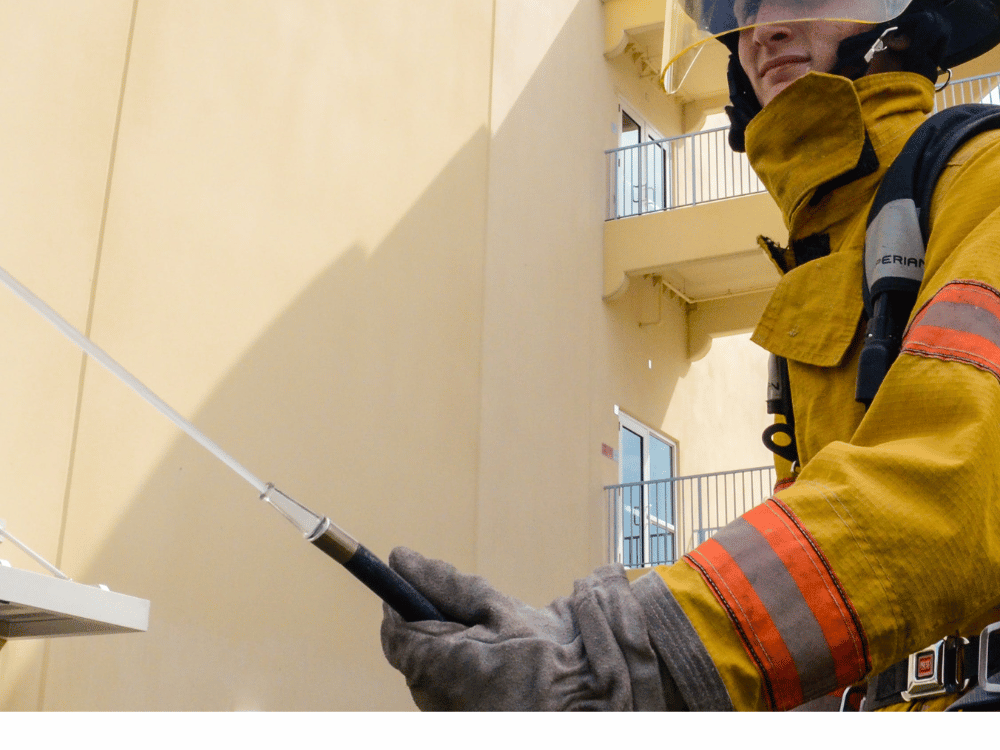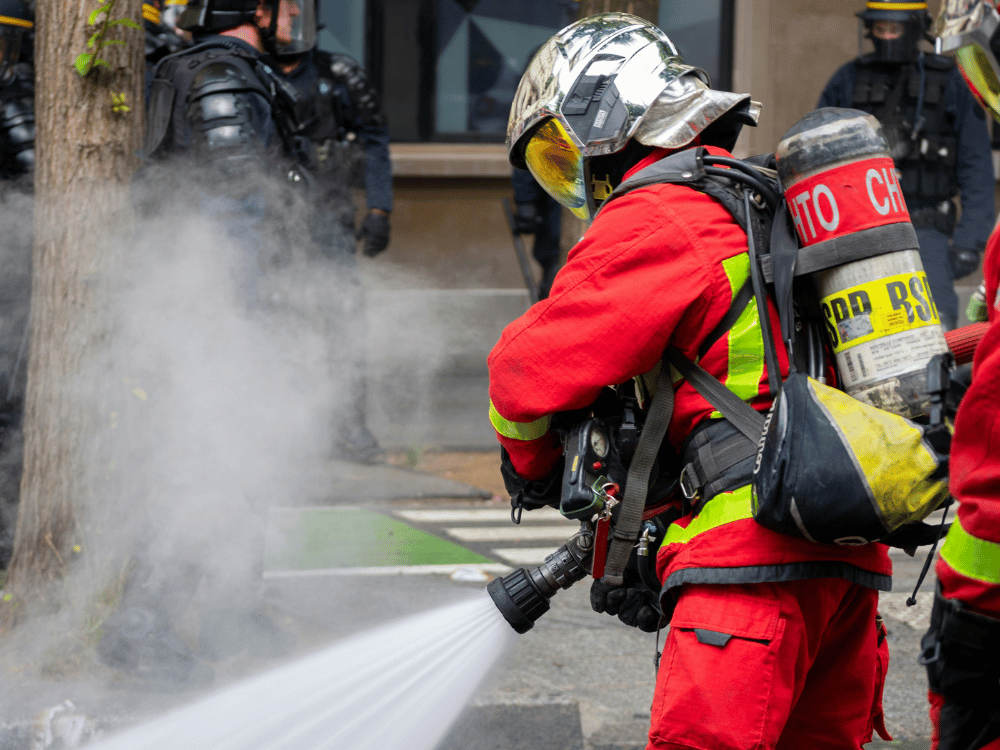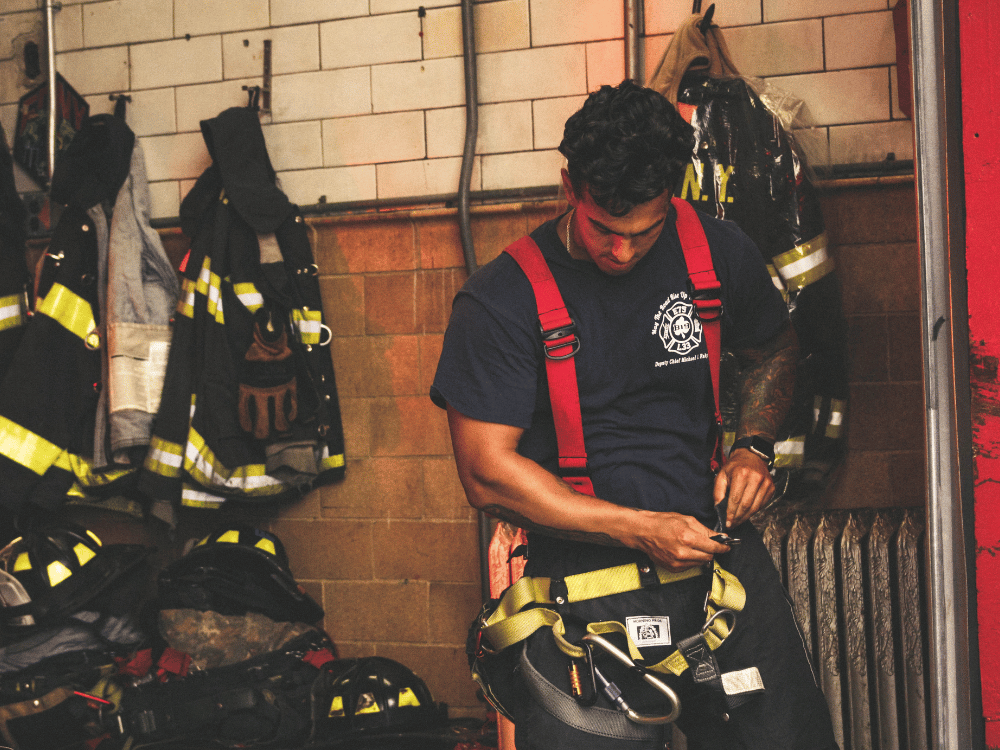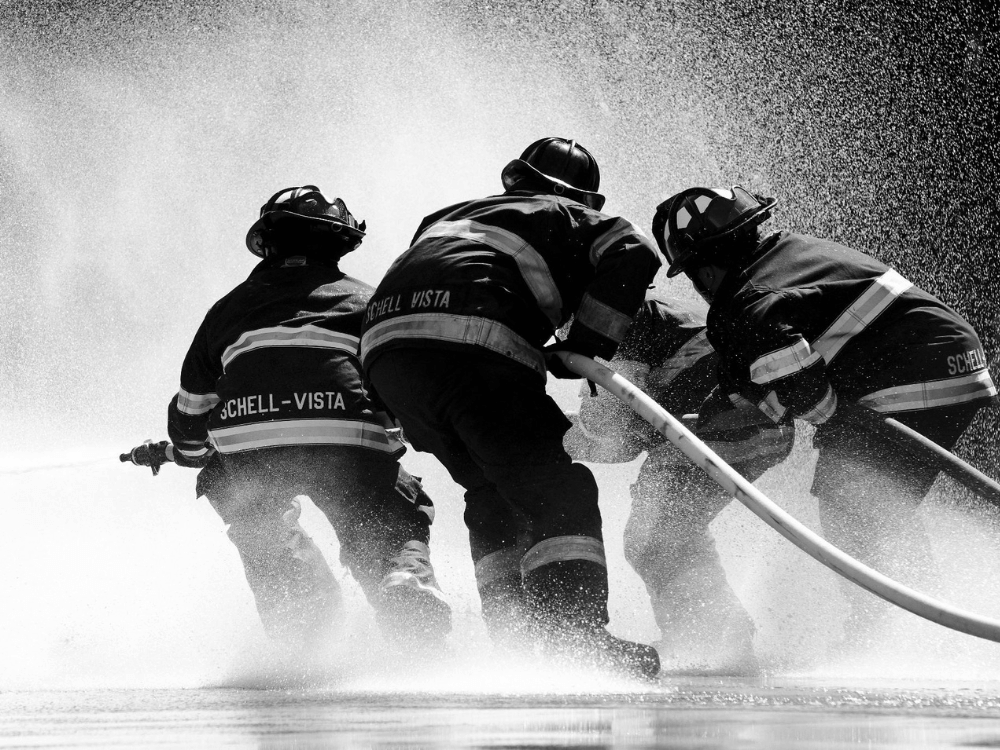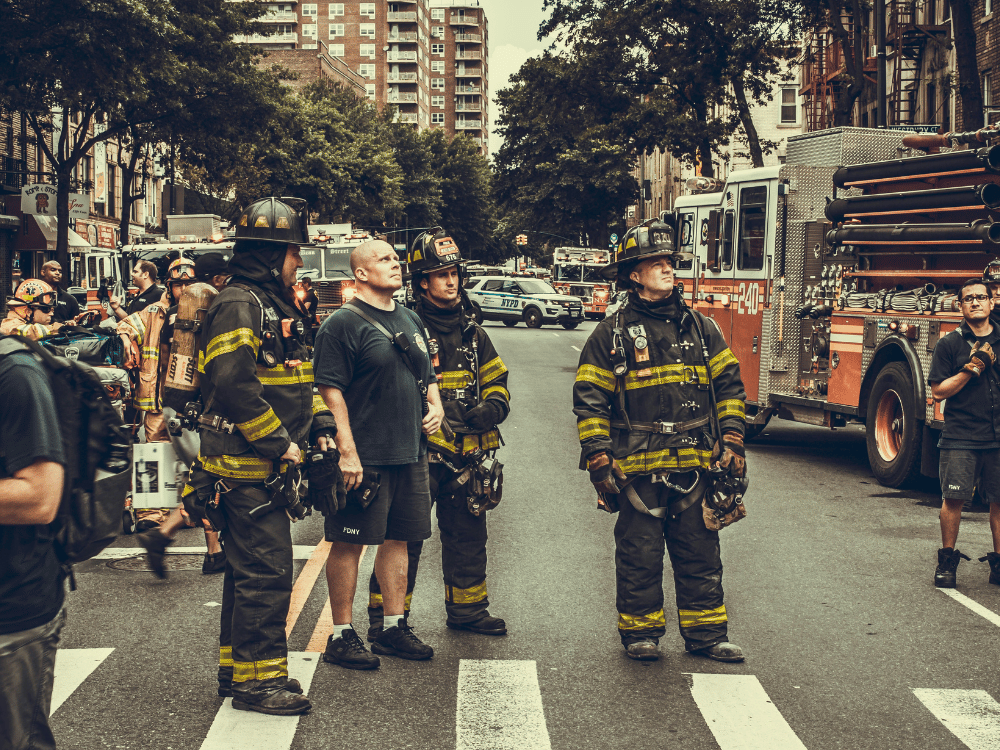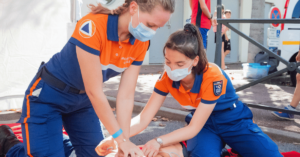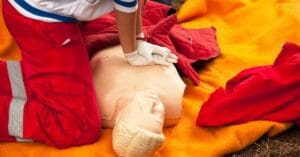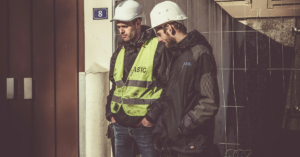Every year, there are around 22,000 workplace fires in the UK.
However, something as simple as a quick workplace checklist for fire safety can keep you and your staff safe from blazes.
But what should be included in these all-important checklists? Who should be carrying out the checks? How often should they be conducted? And how can TSW Training better prepare your team to complete the checklist?
Importance of Fire Safety Training in the Workplace
In 2023, there were 284 fire-related fatalities in the UK. There cannot be a more evident statistic proving the importance of fire safety training in the workplace.
Additionally, businesses can also be expected to foot the bill for the enormous financial implications of fires.
According to recent studies by the Home Office, the annual cost of fires in the UK is around £12 billion. Around £2 billion of that figure comes from property damage.
However, responsible people have the power to avoid these risks by completing regular safety checks in their business. You can do this by following fire prevention checklists or appointing a fire warden to complete the reviews on your behalf.
But whichever avenue you choose, your fire safety risk assessment checklist must be as robust as possible.
Quick Fire and Safety Checklist for Workplace
So, now that we understand how vital fire warden checklists are in preventing blazes, what questions and areas should a comprehensive list cover?
Here are the questions your risk assessment chart should include. If, as the responsible person, you are unable to answer yes to all of these questions, then you may need to take action.
Conducting the Fire Risk Assessment
- Is the fire risk assessment suitable & comprehensive?
- Have the assessment results been recorded, and the needed actions assigned to relevant bodies?
- Is there a detailed Fire Strategy Plan in place?
- Is smoking strictly prohibited in all parts of the workplace, apart from the designated smoking areas?
- Are all heaters fitted with suitable guards and fixed in position away from combustible materials?
- Are suitable measures in place to protect against the risk of arson?
- Are builders, contractors or maintenance workers temporarily on-site?
- Are persons under 18 employed? If so, has a specific risk assessment been conducted?
- Have parents of underaged employees been informed of significant findings and procedures?
Escape Routes and Exits
- Has a test evacuation taken place in the last three months?
- Are evacuation meeting points far enough away from the premises to be designated as a point of ultimate safety?
- Are exit doors clearly marked, readily openable and clear of obstructions?
- Can exit doors be opened from inside during working hours?
- Are escape routes clearly signposted with the “running man” symbol?
- Are the self-closers on fire doors operating correctly?
- Do doors on escape routes open in the direction of travel (i.e. towards the escape route)?
- Are fire action notices displayed clearly throughout the building?
- Are escape routes adequately lit?
- Are regular checks of escape routes & exit doors carried out?
- Are visitors or members of the public likely to be unfamiliar with the escape routes?
- Are there sufficient exits of suitable width for the people likely to be present?
Handling of Flammable Materials
- Are all flammable or hazardous chemicals stored safely under the COSSH guidelines?
- Is the flammable liquid store kept clean and tidy?
- Are there light fittings near combustible materials?
- Are quantities of flammable liquids stored in the premises kept to a minimum?
- Are flammable liquids kept away from all possible ignition sources?
- Are any liquid petroleum gas (LPG) cylinders stored safely in an external compound situated around 2 metres from the building?
- Is the LPG storage facility kept clean and tidy?
- Are warning notices prohibiting smoking or vaping around the storage facility clearly defined?
- Are cylinders stored appropriately with the valves facing upwards?
- Are empty cylinders also safely stored and clearly marked as “empty”?
- Do you have a site map or building plan showing the location of these materials?
- Are flammable liquids or gases used or stored in areas without adequate ventilation?
Firefighting Equipment
- Has suitable firefighting equipment been provided throughout the premises?
- Is firefighting equipment specific and effective to the particular risks and materials of relevant areas?
- Is all firefighting equipment subjected to regular testing by a competent person?
- Have fire extinguishers and other firefighting equipment been serviced in the last 12 months?
Employee Training
- Do employees have access to regular health and safety training?
- Do employees have access to fire safety training?
- Are all staff given periodic refresher training at suitable intervals?
- Do staff know their roles and duties when the fire alarm sounds?
- Do staff know what to do upon discovering or suspecting a fire?
- Are all employees instructed in fire safety procedures on joining the business?
- Have fire wardens been appointed and appropriately trained?
- Has the staff been trained to call the fire brigade, use fire extinguishers and essential fire prevention?
- Are the lifts interlocked with the alarm, and do members know not to use them?
Fire Drills and Evacuation Exercises
- Are routine in-house inspections of fire precautions undertaken?
- Has a fire drill taken place within the last three months?
- Are staff aware of the evacuation procedures and external meeting points?
- Can everyone reach a place of relative safety, e.g., a fire escape stair, within 2-3 minutes?
- Is suitable provision made for people with limited mobility and other disabilities to escape?
Emergency Communication Plan
- Can the fire alarm be raised without placing anyone in danger?
- Are the fire alarm call points clearly visible and unobstructed?
- Are there enough call points for your premises’ size and complexity?
- Has an emergency plan been drawn up in case of a major fire?
- Is there a copy of the plan kept away from the premises?
- Do all employees know who the fire wardens are?
Maintaining Fire Safety Systems and Equipment
- Is the fire alarm system tested weekly?
- Is the fire alarm system serviced and maintained in accordance with BS-5839 Part 1?
- Is the emergency lighting system tested monthly?
- Is the portable firefighting equipment checked monthly?
- Is there a maintenance regime for the fire warning system?
- Is there a maintenance regime for the emergency lighting system?
- Is any fixed firefighting installation or automatic fire-detection system in working order?
Collaborating With Authorities
- Are fire wardens trained to alert emergency services?
- Are records of fire risk assessments and equipment maintenance kept?
Coordinating Emergency Responses
- Are all staff aware of the Fire Strategy Plan?
- If the workplace is shared with others, have you sought their cooperation in reducing the fire risk?
- Do all members know their designated assembly point?
- Are there notices posted informing members what to do in the event of a fire?
- Do fire wardens and fire marshals know their roles and responsibilities in the event of a fire?
Regulations and Best Practices
- Are alarm systems tested weekly per BS-5839?
- Are staff trained regularly on fire safety best practices?
- Are electrical appliances unplugged at night?
- Are the premises adequately maintained?
- Have the sprinklers and fixed firefighting systems been regularly tested and serviced? (weekly, quarterly, six-monthly, annually)
- Are there records of false fire alarms?
Regular Fire Safety Review
- Are regular fire risk assessments carried out? (every six months, after an incident or significant changes to the premises?)
- Are there details of any significant findings from the fire risk assessment and any actions taken?
- Are records of equipment maintenance and staff training kept?
- Are records of fire drills and performance kept?
Feedback and Work Environment Changes
- Do employees know where to go with concerns over fire safety?
- Do employees know who to raise fire hazards with?
- Are employees encouraged to keep work environments clean and tidy?
- Are staff notified when improvements to fire safety standards are required, and why?
Frequently Asked Questions (FAQs)
Here are some more frequently asked questions regarding quick workplace checklist fire safety.
How Often Should a Fire Risk Assessment be Carried Out?
There are no firm rules around how often fire risk assessments should be carried out. However, the responsible person should aim to schedule checks every six months, after an incident, or following extensive building work.
How long Does a Fire Risk Assessment Last?
Fire risk assessments are valid for three years. But you should be conducting reviews more regularly.
What are the 10 Easy Steps for Fire Safety?
After you have installed a regular fire risk assessment schedule, the 10 simple steps to fire safety in the workplace are:
- Recognise and mitigate any fire hazards on the premises.
- Install firefighting equipment and call points across all areas of the business.
- Check that all fire exits work and remain clear.
- Designate external meeting points for evacuations and notify staff of the specific evacuation points.
- Ensure emergency lighting is in place and working.
- Install clearly visible signage with the “running man” icon.
- Train staff on evacuation processes and leaders.
- Test alarm systems weekly.
- Test fire-fighting equipment quarterly.
- Keep a log of all assessments, checks, reviews, tests and drills.
What is the First Rule of Fire Safety?
The first fire safety rule is to sound the alarm if you discover or suspect a fire. You should then follow your premises’s evacuation process. The earlier the alarm is sounded, the quicker and safer your response can be.
Conclusion
Knowing how to keep your business and staff safe from the risk of fire is extremely important.
One of the simplest ways to do this is to have a competent person conduct regular risk assessments using fire and safety checklists like the one outlined above.
But to reach that level, you must ensure your fire wardens are properly trained.
Courses like these are perfect for attaining this level of knowledge:
Study them with TSW Training today and benefit from our 99%+ pass rates.

